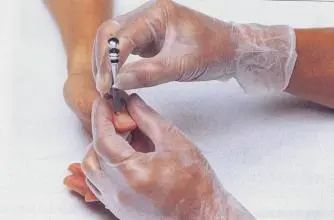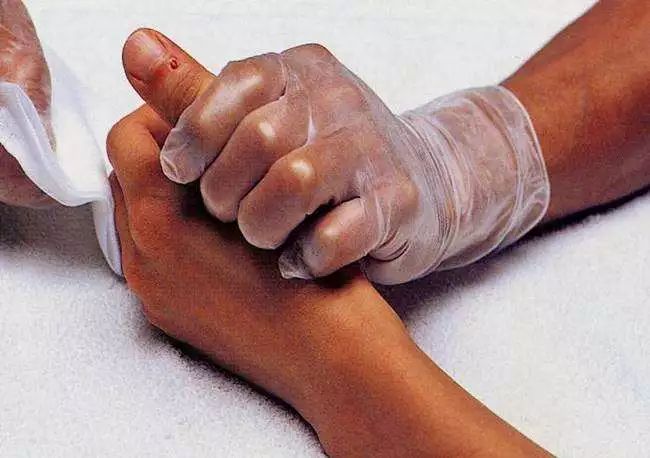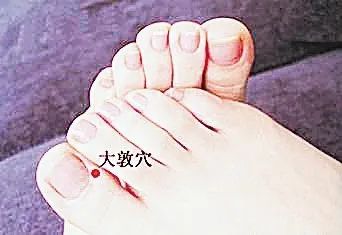Bloodletting Therapy is a unique acupuncture treatment in Traditional Chinese Medicine (TCM). It is one of the most commonly used therapeutic methods since the era of the Nei Jing (Inner Canon), which even considers bloodletting as the first choice for treating diseases and alleviating suffering. Depending on the patient’s specific condition, a three-edged needle (san leng zhen) or a thick, sharp needle is used to puncture specific acupuncture points or superficial blood vessels on the patient, allowing a certain amount of blood to be released as a form of external treatment.
Health clinics often ask: What if inexperienced individuals are afraid to perform bloodletting?
You can purchase blood collection needles or pens from pharmacies. For certain acupuncture points, a pediatric needle (also known as a plum blossom needle) can be used for gentle puncturing to release blood. The pressure should be light, and multiple punctures can be made without causing pain. If you are truly inexperienced and hesitant to perform the procedure, it is best to seek a professional doctor.

Effects of Bloodletting Therapy: It has a beneficial bidirectional regulatory effect on the blood system.
Research indicates that bloodletting therapy can promote human metabolism, stimulate bone marrow hematopoietic function, accelerate metabolism, improve microcirculation and vascular function, facilitate the elimination of harmful substances from the blood, and ensure beneficial substances are timely replenished into the bloodstream, thereby helping the body re-establish homeostasis and restore normal physiological functions. By improving microcirculation, it can also prevent excessive inflammatory responses and promote recovery from inflammation.
Finger Bloodletting, also known as Minor Bloodletting, is generally performed near the jing points or at various extremities of the body where small red or purple blood vessels resembling fine hair are found. This acupuncture method involves puncturing to release dark blood to treat diseases.
Clinical validation shows that Minor Bloodletting can resolve various difficult and complicated diseases. For example:

Case 1: Anxiety
Mr. Li, 33 years old, overweight, has been under immense work pressure for a long time, feeling anxious and restless, nearly on the verge of collapse. Upon observing the meridians, it was found that the area near the Zhongchong (中冲) point on the dorsal side of the middle finger showed stagnation, with small blue veins bulging and winding. After puncturing, a significant amount of dark blood was released, resulting in a refreshing feeling and a substantial improvement in his condition. A disposable blood collection needle can be used instead of a three-edged needle.

Case 2: Nasal Ulceration
Mr. Ji, 36 years old, has developed small ulcers in the right nostril, worsening every winter for many years, causing unbearable pain and recurring despite various treatments. Upon examining the meridians, several small red blood vessels were found at the Dadu (大敦) and Yinbai (隐白) points on the right big toe. After puncturing, dozens of drops of dark blood were released, and the ulcer subsided the next day, with no recurrence for two years.
Case 3: Oral Ulcers
Mr. Zhao, 50 years old, has a robust physique but a busy work schedule with frequent social engagements, leading to excessive talking. He is prone to internal heat, prefers cold and fears heat, and experiences persistent oral ulcers and recurrent hoarseness every summer. Upon examining the meridians, numerous small red blood vessels were found near the Jing point on the big toe. After several punctures for bloodletting, significant improvement was noted. He has not experienced significant heat-related ulcers in recent years. Additionally, after puncturing and bleeding at points on his back, his hoarseness also improved.
Case 4: Increased Vaginal Discharge
Ms. Gou has abnormal vaginal discharge that has increased, and various treatments have failed to cure it. Upon examining the meridians, several prominent red blood vessels were found around the Lidu (厉兑) point on the second toe. After a small amount of blood was released through puncturing, her symptoms improved, and after another release a week later, she was clinically cured.
Case 5: Sensitivity and Suspicion
Mr. Qian, 26 years old, suffers from nervous sensitivity and suspicion, often suspecting others of harboring ill intentions or plotting against him. His eyes appear overly bright and exposed. Upon examination, a winding, angry blood vessel was found near the Shenmen (神门) point on the upper part of the ear. After puncturing, a large amount of stagnant blood was released, resulting in a calmer demeanor and significant improvement in his suspiciousness.
It is said that when a disease manifests, the corresponding acupuncture point should be treated; when the disease resolves, the corresponding stagnant blood vessels will gradually disappear. If the disease does not resolve, puncturing can be done every three days until recovery, with each puncture stopping once fresh blood is released, as excessive bleeding is not beneficial.
Precautions for Bloodletting:
1. Bloodletting Technique
1. After identifying the blood point, quickly puncture with wrist strength, aiming for 6-9 punctures within one second.
2. For prominent blood vessels, a single puncture should yield blood, which will generally spurt out, so be prepared to avoid splattering.
2. Reactions After Bloodletting
1. 80% of patients feel relaxed and comfortable after bloodletting, while 20% may experience increased pain. Those who feel increased pain tend to heal faster than those who feel immediate relief.
2. If there is no sensation after 5-10 bloodletting sessions, further puncturing is not advisable.
3. Timing for Bloodletting
1. For patients with inflammation or acute pain, bloodletting can be performed once a day, and after alleviating symptoms, once every 3-5 days.
2. For chronic patients, once every other day, and after seeing results, once every 5-7 days. Bloodletting can be performed at cupping sites for 15-20 minutes.
4. Contraindications for Bloodletting
1. Patients with significant bleeding or those prone to subcutaneous bleeding.
2. Severe heart disease.
3. Patients with sexually transmitted diseases, skin diseases, or skin ulcers.
4. Pregnant women or those menstruating, and patients with leukemia should not undergo bloodletting.
5. Patients who are overly hungry or full, frightened, or excessively tense should not be punctured.
6. For patients with liver disease, bloodletting should be performed with caution (as with any other treatment), and care should be taken to avoid contact with the blood, especially not to let it touch any wounds, as this could lead to infection.
5. Treatment for “Needle Fainting”
1. Immediately warm the patient’s Dazhui (大椎) point with your palm.
2. Pinch the Ren Zhong (人中) and He Gu (合谷) points simultaneously.
3. Then press Neiguan (内关), Yongquan (涌泉), and Taichong (太冲). If possible, have the patient drink a cup of warm sugar water or glucose water immediately.
4. Immediately have the patient lie down (with their head lower than their feet).
6. Diagnosing Through Blood Color
1. Blood that is very light indicates inflammation or an early stage of illness. Blood mixed with water suggests rheumatism or liver disease. Blood containing jelly-like mucus indicates dampness and toxicity accumulation over time.
2. Blood that is dark red indicates a new injury; blood that is very light indicates inflammation or an early stage of illness.
3. If the blood is clear and watery, it indicates edema; if bubbles appear, it suggests heavy dampness.
4. If foamy liquid is released, it indicates wind evil; a large amount of blood suggests a longer illness duration, while a small amount indicates a shorter duration or deeper location of the disease.
5. If blood is released slowly and continues to ooze despite multiple punctures, it suggests qi deficiency and blood deficiency.
6. If the blood is light and does not coagulate easily, it indicates blood deficiency; if the blood settles quickly and coagulates, it indicates qi deficiency.
The Secret of Bloodletting:
For diseases that have not healed after prolonged treatment, when all methods seem ineffective, one should consider puncturing the prominent blood vessels at the ankles, elbows, wrists, and knees, which may yield unexpected results.
Bloodletting is generally not recommended at night; it is best performed around noon.
👇 Click “Read More” below to learn about health series products.

